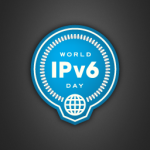OEJ in Argentina – 4K Conference in Buenos Aires!
Edvina’s founder and CEO, Olle E. Johansson, is going to do training and deliver a talk at the 4K conference in Buenos Aires. Trainings will be November 28-30, the Conference takes place December 1st to 2nd.
– “I really look forward to meeting the Open Source Communication community in Latin America!” says Olle. “I’ve never been in Argentina before and got an invitation from Nicolás Gudiño, an old friend in the Asterisk community and developer of the Flash Operator Panel.”
Olle is going to deliver parts of his SIP Masterclass as a three-day training covering the SIP protocol, SIP security and Kamailio – the Open Source SIP application server. The topic for the talk will be “Open Unified Communication – disconnecting ourselves from the PSTN”.
Kamailio/SER 10 years old
 The first SIP software we used in Edvina was SER, Sip Express Router, from iptel.org, a spinoff from the Fokus research institute in Berlin. The development team gathers world leading SIP experts and developers, so it’s a joy to meet them and brainstorm and share experiences. In almost all our installations and platforms, a SIP proxy is at the core of the real time multimedia platform. Our choice has always been SER/OpenSER/Kamailio.
The first SIP software we used in Edvina was SER, Sip Express Router, from iptel.org, a spinoff from the Fokus research institute in Berlin. The development team gathers world leading SIP experts and developers, so it’s a joy to meet them and brainstorm and share experiences. In almost all our installations and platforms, a SIP proxy is at the core of the real time multimedia platform. Our choice has always been SER/OpenSER/Kamailio.
Starting as a SIP proxy, moving on as an extensible SIP server
Sip Express Router started as an Open Source SIP Proxy. Today we see Kamailio, based on the common sip-router.org core, as an extensible SIP server. With an embedded presence server, http support and interfaces to python and lua for scripting, it’s a platform that can handle many different roles in a large-scale SIP architecture. IPv4 and IPv6 support from the beginning, security integrated and a very active development team. Everything you need to build a standard-compliant cool network for your organization’s real-time communication. 10 years of success.
Jubilee September 2nd, 2011 where it all started
The 3rd of September marks 10 years since the start. Reason to celebrate, don’t you think?
The Sip-Router team will celebrate on Friday, September 2nd and into the night. FhG Fokus Research Institute hosts a one-day conference session with all the core people. If you have any interest in SIP and these platforms, make sure you will be there.
The event is organized with sponsorships from FhG Fokus Institute, Asipto, Amooma and TeamForrest. At the same time local events will be organized in Barcelona, Spain and Vienna, Austria. Read the agenda and register today!
Let’s start the World IPv6 Year!
 Today was the World IPv6 Day. A huge worldwide event for content providers to test dual stack access to their web servers. In Sweden, we organized a technichal IPv6 conference today, with many good talks.
Today was the World IPv6 Day. A huge worldwide event for content providers to test dual stack access to their web servers. In Sweden, we organized a technichal IPv6 conference today, with many good talks.
So far, it seems like nothing happened. Which means that we can simply say “Don’t panic” to content providers. Making your web sites available for IPv6 won’t hurt your customer base. Everything will work as before. You won’t get millions of hit over IPv6 today, but access over that protocol will slowly grow and you will be part of the Internet growth. IPv4 has reached the end, growth will happen on IPv6.
This means that it’s time to focus on IPv6 in all projects. Make sure that all new solutions support IPv6. Do not start a new development project without IPv6 support. Do not buy new equipment without IPv6 support. Do not start new VoIP projects without IPv6.
Edvina has been active with IPv6 for many years. And we will continue to work with IPv6. We’re founding the Swedish IPv6 Forum together with the .SE foundation. We organized the first Nordic IPv6 conference with the IPv6 forum years ago. Last year, we hosted the SIPit 26 test event for VoIP vendors, with a focus on IPv6. We can’t say that we’re experts after all the years, but we’re surely focused and totally committed to make sure our customers move forward and stay connected to the Internet. Fully. With both IPv4 and IPv6.
And we’re going to clean up outside our own door to. We have native IPv6 in our data center, DNS, e-mail, network management, VPNs and our office connected to IPv6. The web site will soon be there. Step by step we’re building experience and enhancing our knowledge – from the basics to security, VoIP and routing.
Make sure your organization stay connected too. Make the coming 12 months the IPv6 year for your IT platforms. Educate, test, develop, deploy. Let’s stay connected, let’s move to IPv6!
IPv6 Ripeness – Sweden is lagging behind
RIPE, the European IP registry, does regular measurements on the “IPv6 ripeness” of all the Local Internet Registries in Europe. A LIR is typically an Internet Service Provider or a large company that acts as their own Internet provider, maybe to get multihoming solutions for their services.
In Sweden, Ripe shows that 52% of the 255 LIRs have no IPv6 assignment. We’re not the worst country, but not in front either. The EU plan was originally that everyone should have IPv6 access now, but these statistics shows that we’re far away. Daniel Karrenberg writes more about RIPE’s IPv6 Ripeness statistics in an article published on CircleID.
Time to put pressure on your local ISP to get IPv6 – Now!

